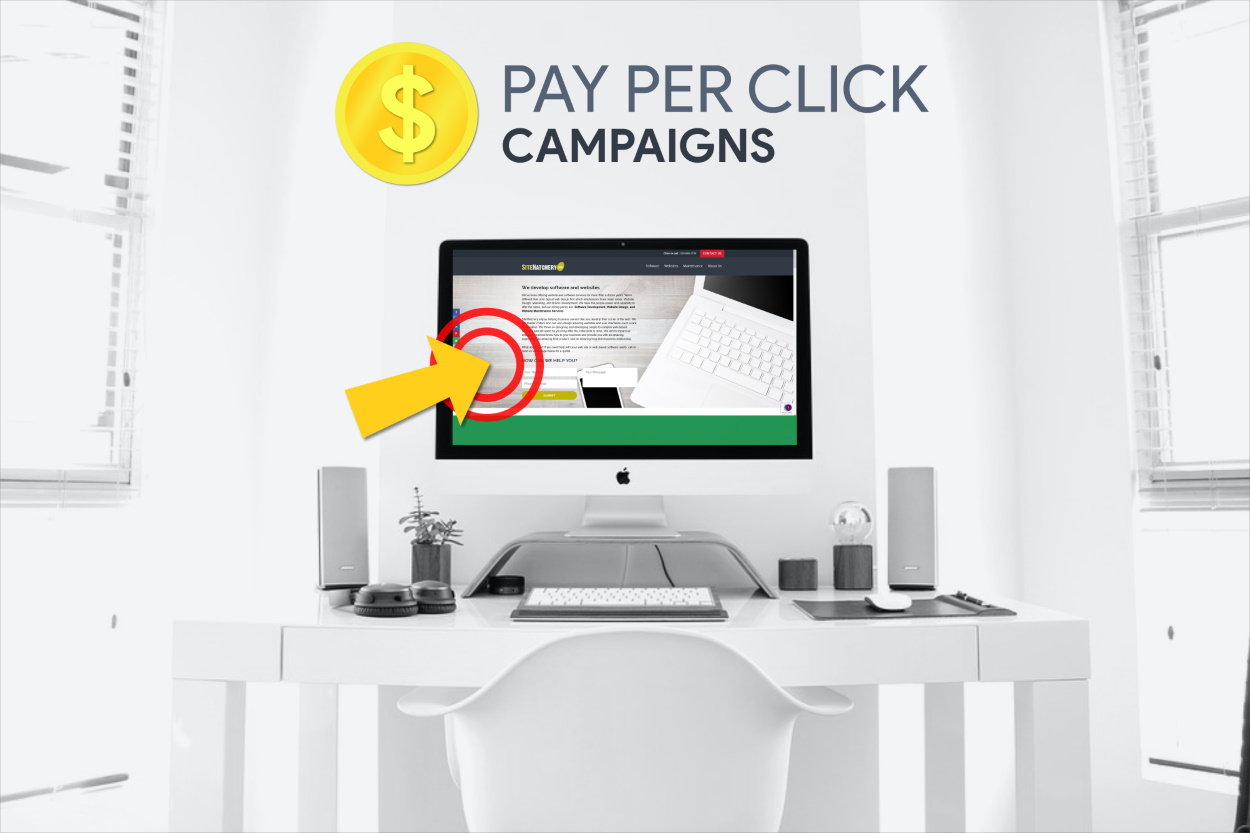Perhaps you’ve heard of pay-per-click, or PPC, ad campaigns. Even if you don’t recognize the term, you’ve seen them: the “sponsored links” that show up among the results in a search engine, or the ads that appear on many web pages. Offering Display and Text advertisements are a great way to reach consumers who have a need for your product or service, but are not aware that you or your business exists. In this article, we will discuss, “How PPC Campaigns Can Get You SALES.”
Entire books have been written on PPC “search advertising” and how to get the most out of it. This is just a basic intro, because I want to make sure you know that it’s easy and affordable to get started with a custom PPC campaign. The best thing about pay-per-click is, unlike other forms of advertising such as print or broadcast media, you only pay if you reach your target audience! It’s essentially the modern approach to what is termed “direct marketing,” getting your message straight to the customer.
If you’ve been reading the SiteHatchery blog, you’ve seen me write about keywords, and how important they are in driving traffic — in the form of potential customers — to your site. With PPC, you purchase ad space based on keywords. You get to decide what keywords’ search results or website content you want your ads to show up alongside (based on your market research and knowledge of your customer base).
Once you sign up for an ad network’s PPC program, you submit your bid based on the “cost per click” (CPC). The more you are willing to pay, the more often your ad will show up higher in the search results. (You could also bid on CPM – cost per thousand page viewers.) When you set your bid price (.01 to $100), choose the highest CPC you’re willing to pay, but be aware that you will only have to pay one penny above what the next-highest auction bidder has submitted – kind of like eBay. Also, you only have to pay if your ad is legitimately clicked, and you can set a cap on how much money, total, you’ll willing to pay per month (or per campaign), so you won’t unwittingly blow your budget.
In Google AdWords, there are also lots of settings and tracker tools that advertisers can play with if you want to “split test” or adjust ad copy, change the order of your keywords, and so on. Also, you can choose to block ads from direct competitors or any site you don’t want your ads to be placed on – just input the URL into a filter on the AdWords site.
You might find that competition is tight and prices are high for your “best” keywords. Try to think outside the box and consider more specific niche (“long tail”) keywords as well.
Google AdWords is by far the most popular PPC option, and does the highest volume in advertising sales. Your ads could show up in Google search results, on Google maps, in YouTube, Gmail, RSS feeds and so on. However, don’t overlook Yahoo’s Sponsored Search program and Microsoft adCenter.
Because your ads will show up directly in search results and the contextual ads should only be placed on sites with truly relevant content, PPC is a “shotgun” approach to advertising. You’re not paying to show your ad to people who would probably never be interested in what you have to offer.
I need to caution you that, like any form of advertising, PPC doesn’t always pay off right away. It may take a few months or more. However, spend a few seconds Googling and you might find a coupon code to try out $50 or $100 worth of AdWords advertising for free.
PPC campaigns can convert your targeted traffic into sales. Your best bet is to combine great ad copy and a well-thought-out PPC campaign with targeted keywords (Google’s AdWords keyword search tool and search-based keyword tool are handy aids).
Have you tried a PPC campaign for your business or website? Please let me know in the comments and you’ll be entered to win a Sitehatchery T-shirt.
Also, if you would like to be more in tuned with your website and what visitors are doing and how they get to you. SiteHatchery.com offers Custom Monthly Reports which will follow the PPC advertisement traffic to your website. Get visual look on what topics interest your visitors and what article posts (and pages) are frequently viewed.
With custom reports sent to you each month, you will have statistics that help understand what your visitors like and don’t like. Comments and notes are included from our developers, who review the reports before sending them off. Adding recommendations that will enhance the experience of your visitors when interacting or browsing your website.
Posted by: Sitehatchery.com – a Chico web design company providing web design and development services nationwide.
